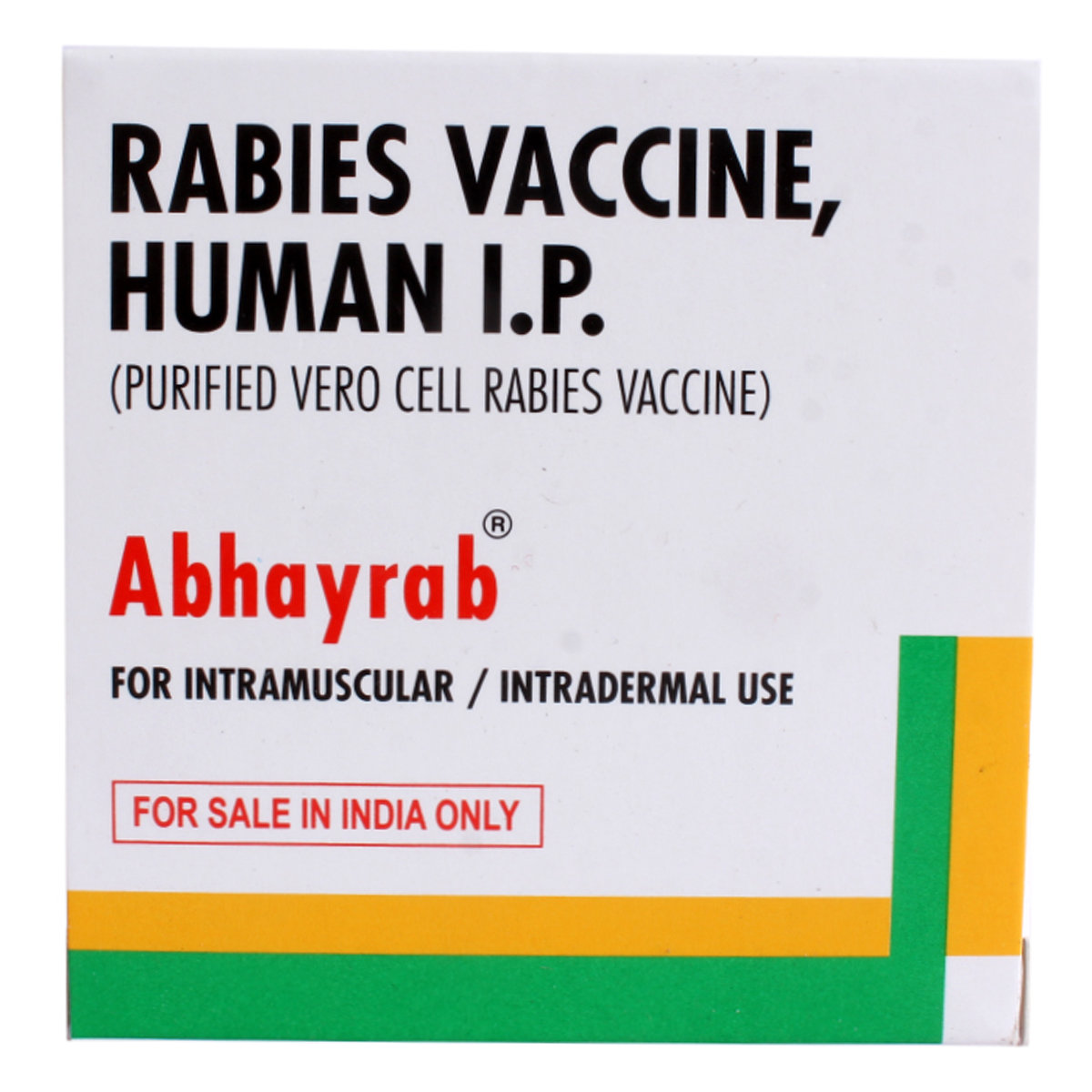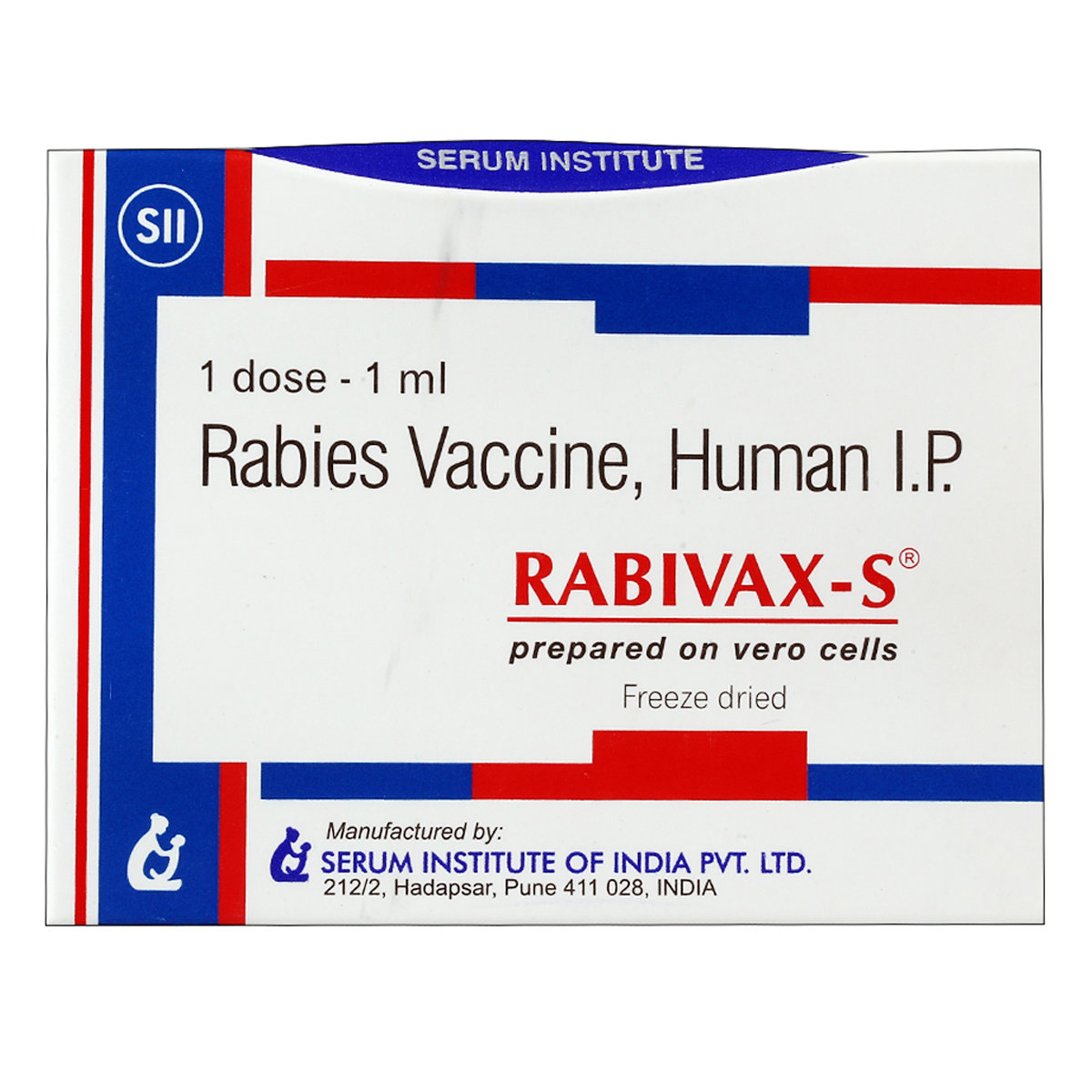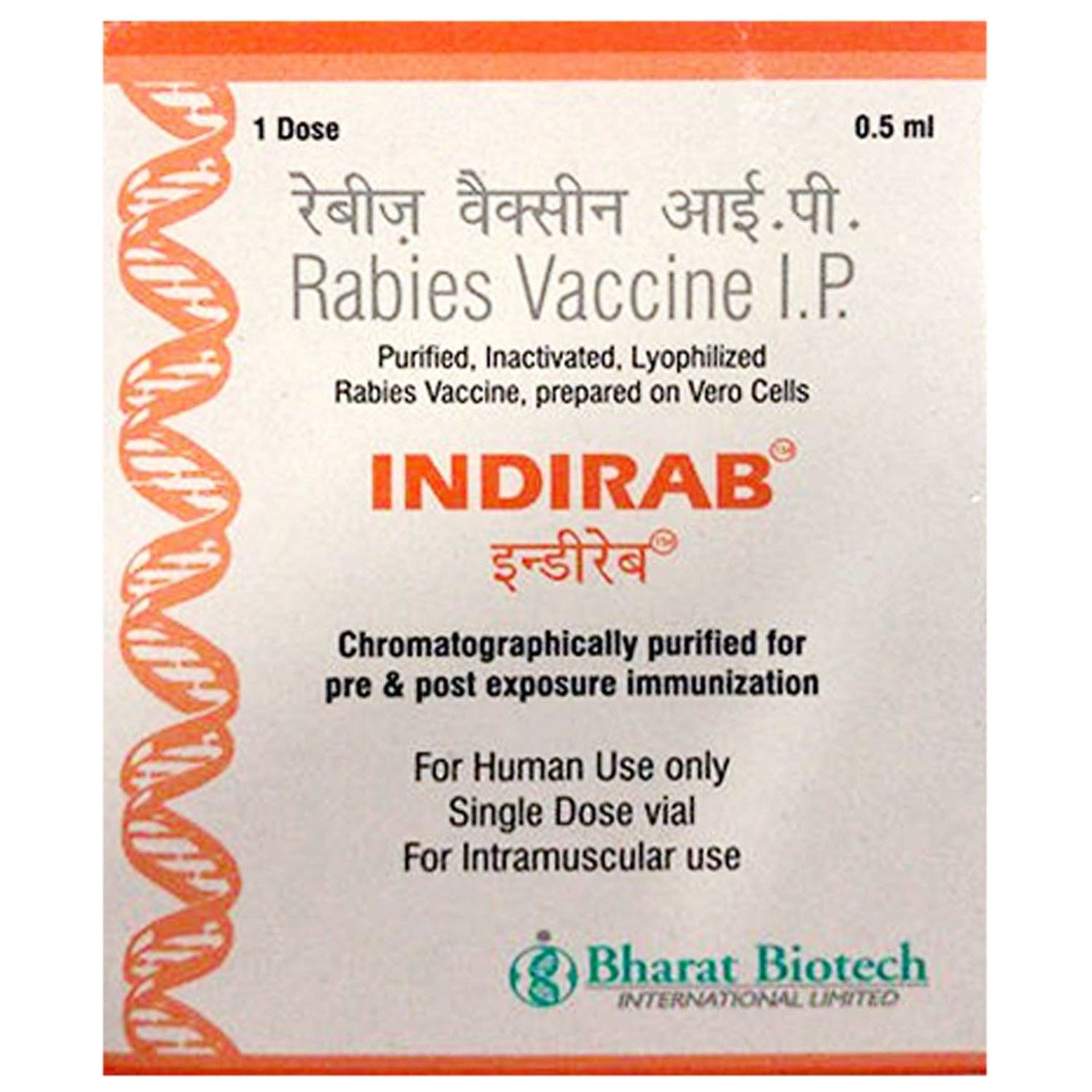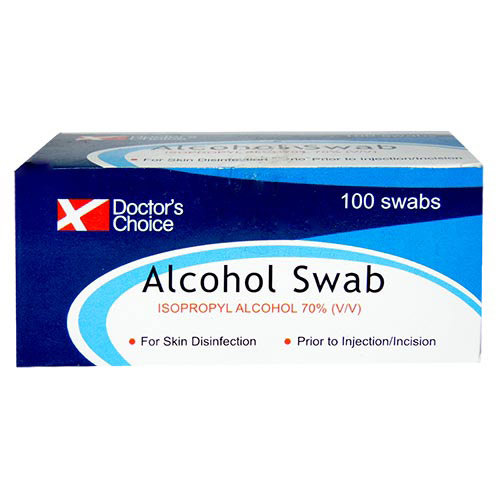Abhayrab Vaccine
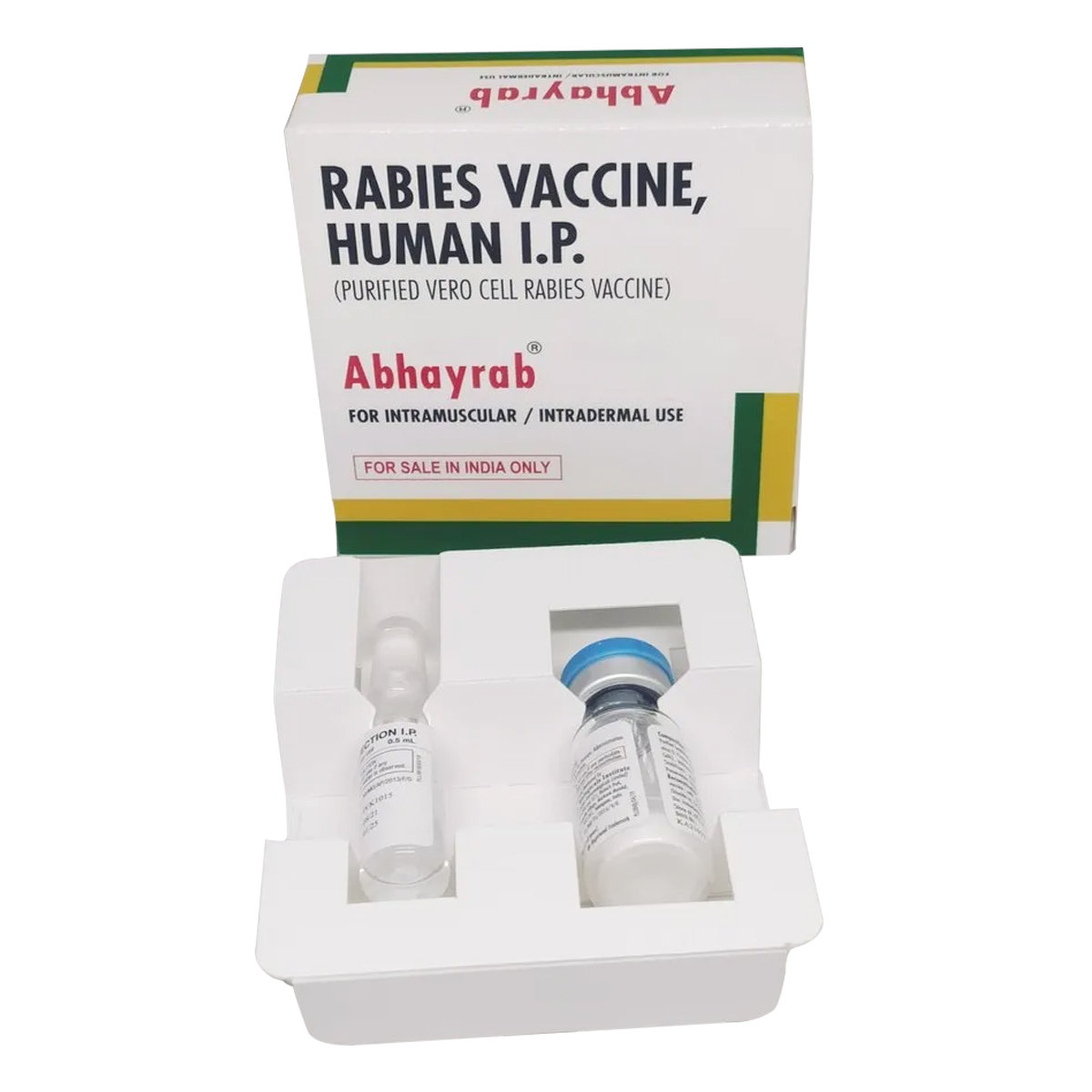
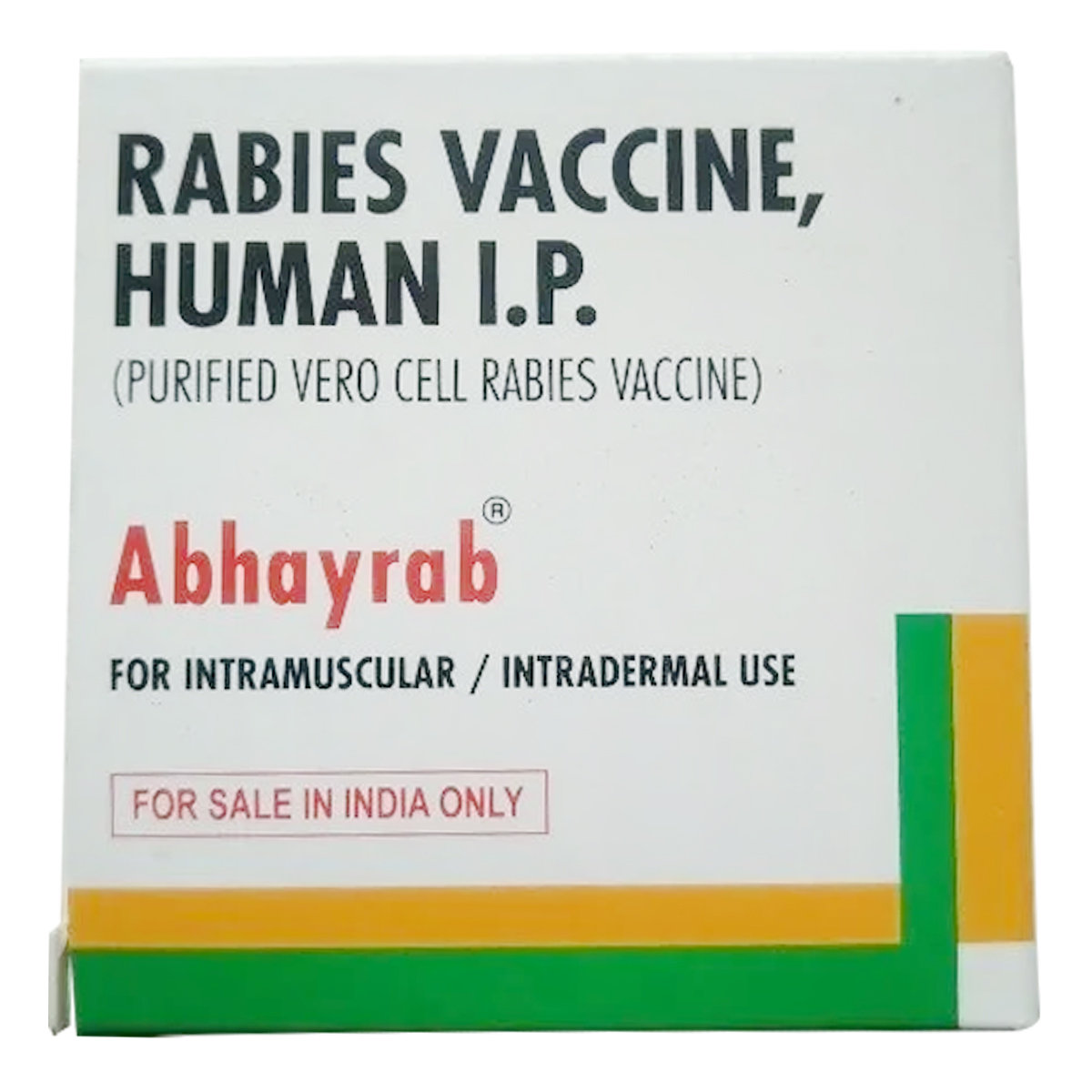
MRP ₹397.5
(Inclusive of all Taxes)
₹47.7 Cashback (12%)
know your delivery time
Provide Delivery Location
Composition :
Manufacturer/Marketer :
Consume Type :
Expires on or after :
Return Policy :

Secure Payment

Trusted by 8 Crore Indians

Genuine Products
Therapeutic Class
Country of origin
Manufacturer/Marketer address
Author Details
We provide you with authentic, trustworthy and relevant information
Disclaimer
Alcohol
Safe if prescribed
It is unknown whether it is safe to consume alcohol with Abhayrab Vaccine . However, as a precautionary measure, limiting or avoiding alcohol consumption is advisable.
Pregnancy
Consult your doctor
If you are pregnant, consult, and seek advice from your doctor before receiving the vaccine.
Breast Feeding
Consult your doctor
Please tell your doctor, if you are a breastfeeding mother before receiving the vaccine.
Driving
Safe if prescribed
It is not known if Abhayrab Vaccine affects your ability to drive or operate machinery. Drive only if you are alert.
Liver
Consult your doctor
Limited information is available regarding the usage of Abhayrab Vaccine in patients with liver impairment. Let your doctor know if you have liver disease/conditions.
Kidney
Consult your doctor
Limited information is available regarding the usage of Abhayrab Vaccine in patients with kidney impairment. Let your doctor know if you have kidney disease/conditions.
Children
Safe if prescribed
Abhayrab Vaccine can be given safely to children provided; dose has to be prescribed by a doctor.
Product Substitutes
Keep Refrigerated. Do not freeze.Prepaid payment required.
About Abhayrab Vaccine
Abhayrab Vaccine belongs to the category of medicine called immunizing agent used to prevent rabies disease. Rabies is caused by a virus called the rabies virus. It is transmitted to humans and other animals through close contact with saliva from infected animals (bites, scratches, licks on broken skin and mucous membranes). Rabies' symptoms include pain or itching at the site of the bite wound, fever, hydrophobia (fear of water), and intolerance to noise, bright light or air.
Abhayrab Vaccine contains 'Rabies Vaccine, Human' that provides long-lasting protection against infection from the rabies virus. Abhayrab Vaccine helps develop immunity by forming antibodies that protect against infection caused by rabies viruses. It is essential to complete the vaccine course to prevent this fatal disease.
Abhayrab Vaccine will be administered by a healthcare professional. Do not self-administer it. In some cases, you may experience some common side effects like feeling unwell, headache, muscle pain, fever, nausea, injection site swelling, injection site redness, itching, or bruising at the injection site. Most of these side effects of Abhayrab Vaccine do not require medical attention and gradually resolve over time. However, if the side effects are persistent and worsen, reach out to your doctor.
If you are allergic to Abhayrab Vaccine or any other vaccination, please tell your doctor. Please inform your doctor if you are using any prescription and non-prescription medications, including vitamins and herbal supplements. Consult your doctor before taking Abhayrab Vaccine if you are pregnant, planning for a pregnancy, or breastfeeding. Abhayrab Vaccine is a cold chain vaccine, and so it has to be stored in the refrigerator between 2-8°C else its efficiency might be lost. Do not freeze.
Uses of Abhayrab Vaccine
Medicinal Benefits Mweb
Key Benefits
Abhayrab Vaccine contains ‘Rabies Vaccine, Human’ that provides long-lasting protection against infection from the rabies virus. Abhayrab Vaccine helps develop immunity by forming antibodies that protect against infection caused by rabies viruses. It is essential to complete the vaccine course to prevent this fatal disease. It can be used in two ways: Pre-exposure prophylaxis (vaccinating before you come into contact with rabies virus at the age of 2-10 years) and post-exposure prophylaxis (vaccinating after you have come into contact with rabies virus). The rabies vaccine is used in all age groups.
Directions for Use
Side Effects of Abhayrab Vaccine
- Feeling unwell
- Headache
- Muscle or joint pain
- Fever
- Nausea
- Pain, swelling, redness, itching, or bruising at the injection site
Drug Warnings
If you are allergic to Abhayrab Vaccine or any other vaccination, please tell your doctor. Consult your doctor before taking Abhayrab Vaccine if you are pregnant, planning for a pregnancy, or breastfeeding. Please inform your doctor if you are using any prescription and non-prescription medications, including vitamins and herbal supplements. You must receive all the vaccination doses. Even if you have been vaccinated, you should still take precautions to avoid contact with rabies if you are travelling in an area where rabies prevails. Please get in touch with a doctor immediately if you have been bitten or scratched by an animal in an area with a risk of rabies.
Drug-Drug Interactions
Drug-Drug Interactions
Login/Sign Up
Drug-Food Interactions
Drug-Food Interactions
Login/Sign Up
Drug-Diseases Interactions
Drug-Diseases Interactions
Login/Sign Up
Drug-Drug Interactions Checker List
- HYDROCORTISONE
- METHYLPREDNISOLONE
- PREDNISOLONE
- DEXAMETHASONE
- PREDNISONE
- AZATHIOPRINE
- MYCOPHENOLATE
- CYCLOSPORINE
Habit Forming
Special Advise
- Immunosuppressive treatments, including long-term corticosteroid therapy, may interfere with antibody production and cause rabies' failure. It is advisable to perform a serological test 2 to 4 weeks after the last injection.
- Even if you have been vaccinated, you should still take precautions to avoid contact with rabies.
Diet & Lifestyle Advise
- Avoid intake of processed foods, foods high in sugar and fat, as these may cause inflammation.
- Add foods rich in magnesium like avocados, flax seeds, corn, oatmeals, curd, pumpkin, and high protein foods such as milk, egg, meat in your daily diet.
- Opt for food and drinks high in Omega 3 fatty acids to get relief from pain, swelling, and inflammation. Omega 3 fatty acid-enriched foods include flaxseeds, walnut, soybean oil, salmon, and tuna fish if you prefer non-veg.
- Wounds should be washed immediately with soap and water for 10–15 minutes. It should be cleaned thoroughly with 70% alcohol/ethanol or povidone-iodine, if available.
- Do not apply irritants to the wound, such as chilli powder, plant juices, acids, or alkali.
- Do not cover the wound with dressings or bandages.
- Take the person to a healthcare facility for further treatment immediately.
All Substitutes & Brand Comparisons
RX
Abhayrab-PF Vaccine 2 ml
Human Biologicals Institute
₹404.5
(₹178.0/ 1ml)
74% CHEAPERRX
Out of StockSure Rab Vaccine 1's
Bio-Med Pvt Ltd
₹325
(₹292.5 per unit)
58% CHEAPERRX
Chirorab Vaccine 1 ml
Chiron Behring Vaccines Pvt Ltd
₹397.5
(₹349.8/ 1ml)
50% CHEAPER

Have a query?
Buy best Vaccines products by
Serum Institute Of India Pvt Ltd
GlaxoSmithKline Pharmaceuticals Ltd
Biological E Ltd
Abbott India Ltd
Bharat Biotech
Sanofi India Ltd
Human Biologicals Institute
Msd Pharmaceutical Pvt Ltd
Panacea Biotec Ltd
Zydus Healthcare Ltd
Bharat Sanchar Nigam Ltd
Cadila Healthcare Ltd
Lupin Ltd
Zuventus Healthcare Ltd
Bharat Serums and Vaccines Ltd
Biomed
Indian Immunologiclas Ltd
Novartis India Ltd
Pfizer Ltd
Baxter India Pvt Ltd
Bharath
Bio-Med Pvt Ltd
Biomed Pharma
Cpl Biologicals Pvt Ltd
Dr Reddy's Laboratories Ltd
Indiabulls Pharmaceuticals Pvt Ltd
Indian Drugs & Pharmaceuticals Ltd
Kamada Pharmaceuticals
Mankind Pharma Pvt Ltd
Novamed Pharma
Novo Medi Sciences Pvt Ltd
Ranbaxy Laboratories Ltd
Samarth Life Sciences Pvt Ltd
Shantha Biotech
Smith & Kenner Pharma Pvt Ltd
Synergy Pharmaceuticals
Unison Pharmaceuticals Pvt Ltd
Vins Bio Products Ltd
Wockhardt Ltd
Zydus Cadila
Customers Also Bought


_0.jpg?tr=q-85)
